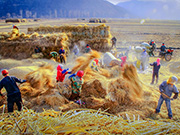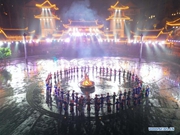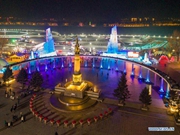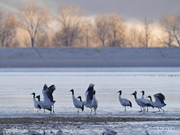

China’s lunar exploration program has once again caught the world’s attention when last week its Chang'e 4 mission made the first ever soft-landing on the dark side of the moon. The mission released a lunar rover called Yutu 2, or Jade Rabbit 2, to map the moon’s inner structures, as well as analyzing soil and rock samples.
For centuries, Chinese people have been making endless efforts to explore the secrets of the moon. Wan Hu, a legendary Chinese official living in the middle of the Ming Dynasty (16th century), was said to be the world’s first “astronaut”, allegedly being lifted into outer space on a rocket chair. Though there is no historical evidence to support this tale, a crater on the far side of the moon was named after Wan by NASA.
China's desire to explore the moon has also made this natural satellite of the earth an important element of the country’s folklore. Like an encyclopedia of moon-related tales, China’s lunar exploration program contains deep cultural connotations. Follow our lead and embark on our Chinese folklore journey to the moon!
 |

 Award-winning photos show poverty reduction achievements in NE China's Jilin province
Award-winning photos show poverty reduction achievements in NE China's Jilin province People dance to greet advent of New Year in Ameiqituo Town, Guizhou
People dance to greet advent of New Year in Ameiqituo Town, Guizhou Fire brigade in Shanghai holds group wedding
Fire brigade in Shanghai holds group wedding Tourists enjoy ice sculptures in Datan Town, north China
Tourists enjoy ice sculptures in Datan Town, north China Sunset scenery of Dayan Pagoda in Xi'an
Sunset scenery of Dayan Pagoda in Xi'an Tourists have fun at scenic spot in Nanlong Town, NW China
Tourists have fun at scenic spot in Nanlong Town, NW China Harbin attracts tourists by making best use of ice in winter
Harbin attracts tourists by making best use of ice in winter In pics: FIS Alpine Ski Women's World Cup Slalom
In pics: FIS Alpine Ski Women's World Cup Slalom Black-necked cranes rest at reservoir in Lhunzhub County, Lhasa
Black-necked cranes rest at reservoir in Lhunzhub County, Lhasa China's FAST telescope will be available to foreign scientists in April
China's FAST telescope will be available to foreign scientists in April